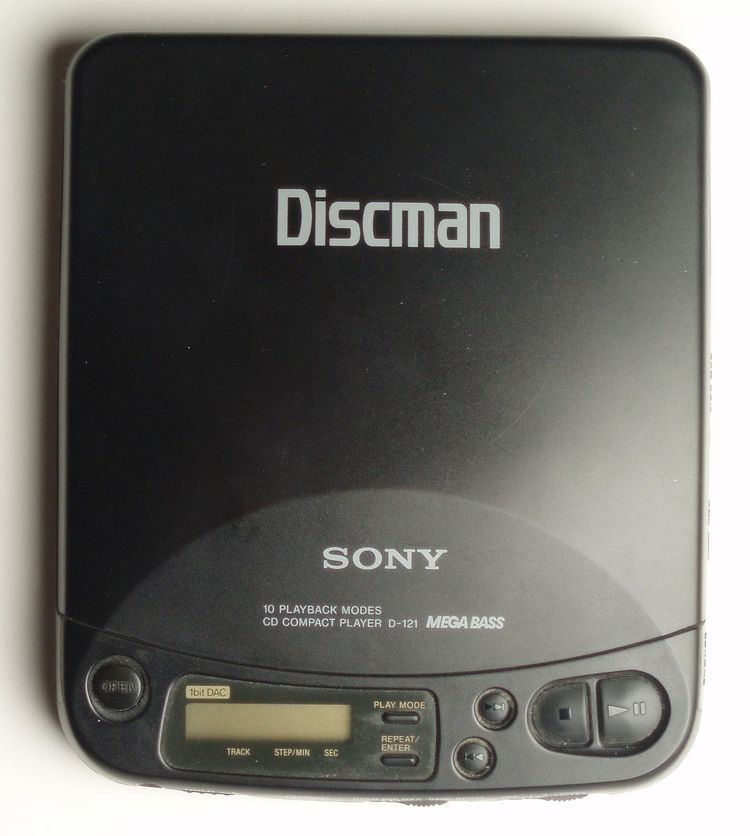 | ||
A portable CD player is a portable audio player used to play Compact discs. The first audio player released was the D-50 by Sony.
Contents
Features
The basic features of a portable CD player are:
- Play/Pause
- Stop
- Rewind
- Fast forward
- Hold (some models)
- Liquid crystal display
- Headphone/audio out socket
The play and pause feature allows the user to pause in the middle of the track (song) and resume it at the same place the listener left off at once the play button is hit again. The stop feature stops the track allowing the user to then switch tracks easily. The fast forward and rewind feature will either fast forward or rewind the track the amount of time you hold the button down. The liquid crystal display provides a visual of how much battery is left, what track (number) is currently playing, and the amount of time elapsed on the track. Some portable CD players can play CD-R/CD-RW discs and some can play other formats such as MP3-encoded audio.
The 8 cm CD provides a smaller alternative to the normal 12 cm CD (although with a lower capacity). Miniature players exist that only play this format.
How it works
Like a full-size CD player, a portable CD player reads the bumps and grooves using a laser. With its photocell (a device that detects any sort of light reflection given off of certain area), it determines whether there is a reflection of light given off from the CD when the laser hits. Depending on the light reflection, the photocell will return a 1 (if there is no reflection) or a 0 (if there is any light reflection). When its laser hits a groove on a CD, it will not reflect any light, making it a 1. When its laser hits a bump or any other surface on the CD, a light reflection will appear making it a 0. The series of data from 0–1 on the CD is then transformed by a digital to analog converter, to recreate the shape of a sound wave. The headphones then amplify the sounds and then the audio is now able to be heard.
Issues with recordable CDs
Some portable CD players do not play recordable CDs (CD-R, CD-RW) because of the way these CDs are recorded. A consumer-recorded CD is recorded by making marks in a thin layer of organic dye, which leads to incompatibility with some CD players. For some users of CD-Rs, the solution to this is to burn the CD at a slower speed or use a different brand of recordable CDs.
Future
Portable CD players are declining in popularity since the rise in popularity of Portable media players that play digital audio files including the iPod and smartphones. Before digital audio players became popular, many switched over to MiniDisc as an alternative to CDs, due to the compact size of the MiniDisc format.
